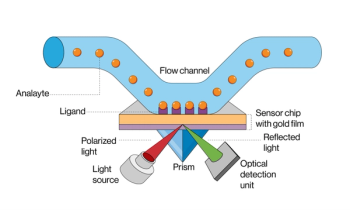
Persimmon Leaves’ Contents Determined Using Hyperspectral Imaging
Using visible and near-infrared (Vis/NIR) hyperspectral imaging (HSI), scientists were able to determine macro- and micronutrient contents rapidly and non-destructively in persimmon leaves.
Using visible and near-infrared (Vis-NIR) hyperspectral imaging (HSI), scientists from Instituto Valenciano de Investigaciones Agrarias (IVIA) in Valencia, Spain were able to determine macro- and micronutrient contents rapidly and non-destructively in persimmon leaves. Their findings were published in Agriculture (1).
Persimmon, a natively Chinese crop that mainly grows in tropical and subtropical areas, has grown exponentially in Spain in recent years. With its popularity comes a need for fair handling practices during growing season, including optimum nutrient management according to the trees’ nutritional statuses at each phenological stage. However, little research has been done on the nutritional requirements of persimmon. Macronutrients (nitrogen [N], phosphorus [P], potassium [K], to name a few) are major constituents of cell structures and organic compounds and are thusly needed in large amounts. In contrast, micronutrients (zinc [Zn], manganese [Mn], copper [Cu], as examples) are involved in the metabolic and enzymatic processes and are needed in small amounts. There has been little work to measure soil capacity for delivering these nutrients, which has pushed research towards proper crop monitoring.
HSI is one technology that is being adapted for several agriculture-related applications. A combination of spectroscopic and imaging techniques, HSI allows the identification of chemical components and their spatial distribution in a sample. HSI is viewed as important for rapidly and precisely assessing crop nutrition. Although the technique has mostly been tested on other crops such as olives, the scientists decided to test HSI on persimmons. The research conducted was also fueled by a lack of studies on determining nutrient concentration using persimmon spectral data. According to the scientists, “Developing a tool to perform a rapid nutritional diagnosis at a lower cost would allow the efficient fertiliser management of crops, leading to earlier decisions on fertilisation, while also reducing costs and the potential risk of contamination” (1).
As part of the experiment, hyperspectral images of 687 persimmon leaves were acquired in the 500–980 nm range over a six-month period, which covers an entire vegetative cycle. The average reflectance spectrum of each leaf was extracted, while foliar ionomic analysis was used to determine the nutrient concentrations in the leaves. These analyses were done using inductively coupled plasma–optical emission spectrometry (ICP-OES) for macro- and micronutrients after microwave digestion, with the Kjeldahl method being used to quantify nitrogen. Partial least square regression (PLS-R) was used to predict nutrient concentrations based on leaf spectral data, using actual values of each element as predictor variables. To pre-process the spectra, Savitzky–Golay (SG) smoothing, standard normal variate (SNV), and first (1D) and second derivatives (2D) were used.
In the study, 75% of the samples were used to calibrate and validate the model through cross-validation, with the other 25% being used as an independent test set. The best performance of the test set’s models achieved an R2 valueof 0.80 for nitrogen. As for phosphorus, calcium, magnesium, and boron, their determination coefficient R2 values were 0.63, 0.66, 0.58 and 0.69, respectively. Lower prediction rates were attained for the other nutrients. For potassium, iron, copper, zinc, and manganese, the R2 values were 0.48, 0.38, 0.24, 0.23, and 0.22, respectively. The variable importance in projection (VIP) was used to extract the most influential bands for the best-predicted nutrients, which were nitrogen, potassium, and boron (B).
Overall, the results show Vis-NIR HSI as a promising alternative for nutritional diagnostics of persimmon leaves. This study is one of the first works on persimmon cultivation using this technique, and it shows that reflectance spectroscopy can characterize nutrient determination and provide detailed information on each nutrient of interest for plant performance.
Reference
(1) Acosta, M.; Rodriguez-Carretero, I.; Blasco, J.; de Paz, J. M.; Quiñones, A. Non-Destructive Appraisal of Macro- and Micronutrients in Persimmon Leaves Using Vis/NIR Hyperspectral Imaging. Agriculture 2023, 13 (4), 916. DOI:
Newsletter
Get essential updates on the latest spectroscopy technologies, regulatory standards, and best practices—subscribe today to Spectroscopy.





